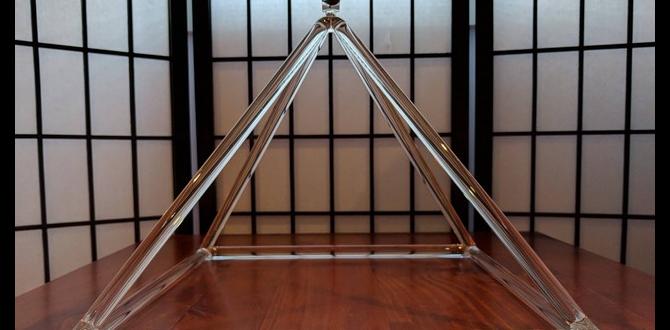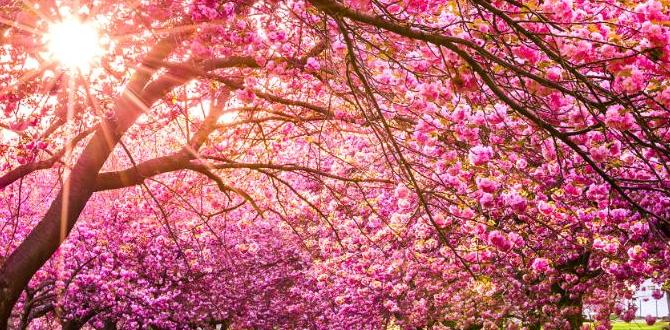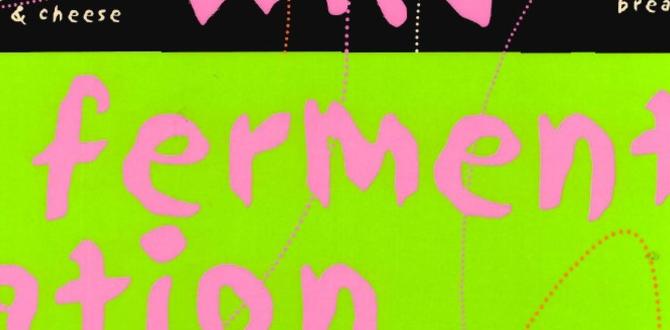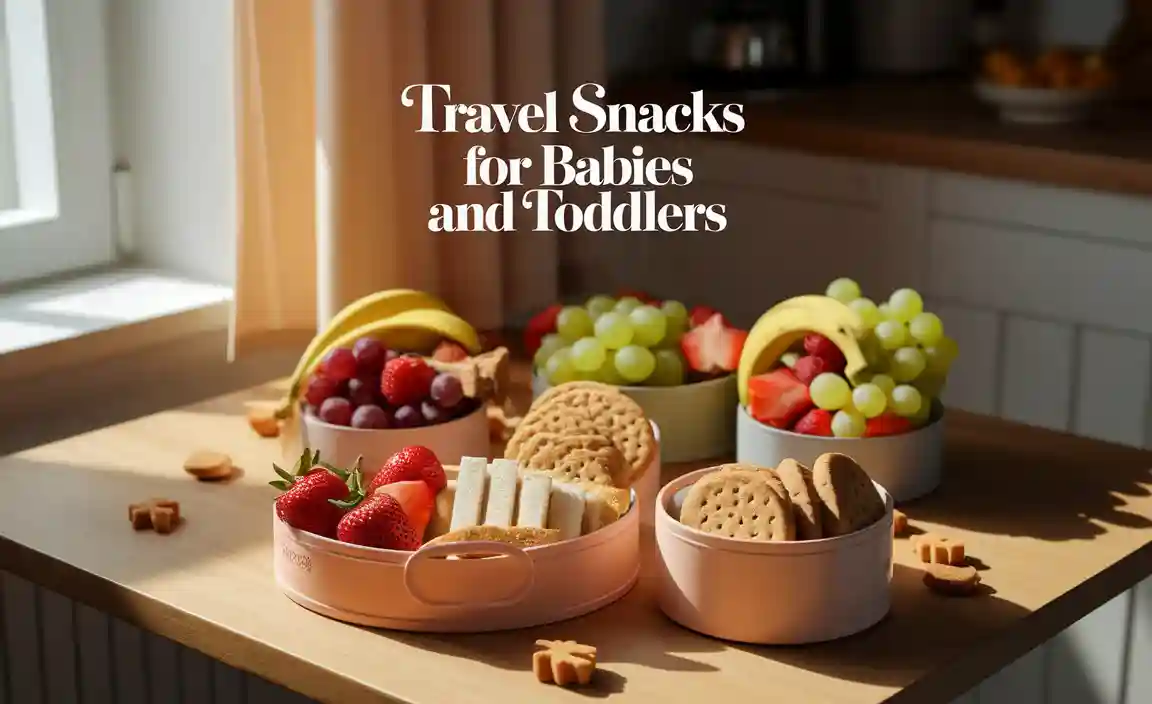Black Forest Mid-Range Travel: Essential Guide
Master affordable and comfortable travel to Germany’s stunning Black Forest with this beginner-friendly guide. Discover how to plan your trip on a moderate budget, find great value accommodations, enjoy delicious local food, and explore the best sights without overspending. Get ready for a memorable, stress-free adventure!
Welcome, fellow travelers! Dreaming of picturesque woodlands, charming villages, and that famous chocolate cake? The Black Forest beckons, and it doesn’t have to break the bank. Many people think visiting beautiful places like this requires a huge budget, leading to frustration or settling for less. But I’m here to show you how to experience the magic of the Black Forest comfortably and affordably. This guide is packed with practical tips and insider advice to help you plan a fantastic mid-range trip. We’ll cover everything from getting there and around to finding cozy places to stay and delightful foods to try. Ready to plan your accessible adventure?
Why Choose the Black Forest for Mid-Range Travel?
The Black Forest, or Schwarzwald in German, offers a wonderful blend of natural beauty, rich culture, and outdoor activities. It’s a region that appeals to a wide range of travelers, from families seeking gentle hikes and playgrounds to solo explorers looking for scenic drives and historical sites. The beauty of the Black Forest for mid-range travel lies in its diverse offerings. You can find charming guesthouses and apartments that provide excellent value, delicious local cuisine that’s satisfying without being extravagant, and a wealth of free or low-cost activities like hiking and visiting scenic viewpoints. Unlike some more heavily touristed areas in Europe, the Black Forest often provides a more authentic and relaxed experience, allowing you to connect with the local culture and stunning landscapes without the pressure of a high budget.
Planning Your Mid-Range Black Forest Adventure
A little planning goes a long way when aiming for comfortable, mid-range travel. The key is to be strategic about when and where you go, and how you travel.
Best Time to Visit for Value and Experience
The Black Forest experiences distinct seasons, each offering different charms and influencing prices.
Spring (April-May): Witness the landscape come alive with blooming flowers. Prices are generally moderate, and crowds are smaller than in peak summer. It’s perfect for hiking before it gets too warm.
Summer (June-August): This is peak season. Expect the best weather for outdoor activities but also higher prices and more visitors. Booking accommodations and popular attractions in advance is crucial. For mid-range travelers, consider visiting in early June or late August to find a balance.
Autumn (September-October): The forests are ablaze with fall colors, making it incredibly picturesque. Weather can be crisp and pleasant, and crowds thin out after the summer rush. This is an excellent time for value and stunning scenery.
Winter (November-March): If you enjoy winter sports or cozying up by a fire, winter can be magical. Some areas offer Christmas markets. While ski resorts can be busy, general travel might be more budget-friendly, especially outside of holiday weeks.
Choosing Your Base: Strategic Locations
Where you call “home” during your Black Forest trip significantly impacts your budget and how much you can see. Instead of staying in one central, potentially pricier town, consider basing yourself in smaller, well-connected villages.
Freiburg im Breisgau: While a larger city, Freiburg acts as a gateway to the Southern Black Forest and offers a range of hotel and apartment options. It has excellent public transport links. You can enjoy its vibrant atmosphere and then take day trips into the heart of the forest.
Titisee-Neustadt: Famous for its stunning lake, this area offers many vacation apartments (Ferienwohnungen) that are ideal for mid-range travelers. Staying slightly away from the absolute lakefront can yield better prices.
Gengenbach: A postcard-perfect medieval town, Gengenbach is charming and offers a quieter experience. It’s a great base for exploring the northern Black Forest and has lovely guesthouses.
Offenburg & surrounding rural areas: For even greater value, explore towns near larger hubs like Offenburg. You’ll often find more affordable family-run accommodations and a more local feel.
Transportation: Getting Around Affordably
Germany boasts an excellent public transportation network, which is your best friend for mid-range travel in the Black Forest.
Deutsche Bahn (DB) trains: Connect major towns and cities efficiently. Look for “Super Sparpreis” tickets for early bookings to get significant discounts.
Deutsche Bahn (the national railway company) is your go-to for planning train journeys across Germany.
Local Buses & Trams: Within towns and for reaching smaller villages, local transport is reliable.
Konus Card: If you stay in participating towns, you often receive a KONUS card. This fantastic free benefit allows unlimited use of local buses and trains in the Black Forest holiday region. It’s a massive money-saver! Always ask your accommodation provider if they offer it.
Car Rental (Optional & Strategic): While public transport is excellent, renting a car can offer flexibility, especially if you plan to explore very remote areas or have specific routes in mind. However, factor in parking costs and fuel. For mid-range, consider renting for just a few days or opting for a smaller, fuel-efficient vehicle.
Mid-Range Accommodation Options
Forget overpriced luxury hotels. The Black Forest excels in providing comfortable, characterful, and budget-friendly places to stay that enhance your travel experience.
Types of Mid-Range Stays
Ferienwohnungen (Vacation Apartments): These are incredibly popular and offer great value, especially for families or longer stays. You get a private space, often with a kitchen, allowing you to save money by preparing some of your own meals. Many are modern, fully equipped, and located in beautiful settings.
Pros: Kitchen facilities, more space, often more affordable per night than hotels, authentic local experience.
Cons: May require booking for a minimum number of nights, often self-catering (breakfast not included).
Gästehäuser (Guesthouses) & Pensionen (B&Bs): These are typically smaller, family-run establishments offering comfortable rooms, often with breakfast included. They provide a warm, personal touch and are a fantastic way to interact with locals.
Pros: Friendly atmosphere, breakfast often included, good value, local insights.
Cons: Rooms might be simpler than in a hotel, fewer amenities.
Mid-Range Hotels: You can also find reputable mid-range hotel chains or independent hotels that offer clean, comfortable rooms with standard amenities. Look for hotels slightly outside the absolute city centers for better pricing.
Pros: Reliable service, amenities like reception and sometimes restaurants, easier booking.
Cons: Can be less charming than guesthouses, breakfast often an extra charge.
Tips for Booking Smart
Book in Advance: Especially if traveling during shoulder seasons or holidays.
Look for Included Amenities: A kitchen in a Ferienwohnung or breakfast in a Pension can significantly cut daily costs.
Check Reviews: Websites like Booking.com or directly on accommodation sites offer valuable insights from past guests. Focus on reviews mentioning cleanliness, location, and value for money.
Consider Location: Staying in a slightly smaller village near a major attraction can be much cheaper and often more peaceful, with good public transport links.
Savoring the Flavors: Black Forest Cuisine on a Budget
You can enjoy the hearty and delicious cuisine of the Black Forest without overspending. The key is to embrace local specialties and know where to find them.
Must-Try Local Dishes (and How to Enjoy Them Affordably)
Black Forest Gateau (Schwarzwälder Kirschtorte): Of course! While a slice at a fancy restaurant can be pricey, many village bakeries (Bäckerei) and cafes offer delicious versions at more reasonable prices. Share a slice or enjoy a smaller portion.
Schwarzwälder Schinken (Black Forest Ham): This distinctively smoked ham is a regional treasure. Buy some from a local butcher or market and enjoy it as part of a picnic lunch.
Käsespätzle: A comforting dish of soft egg noodles layered with cheese and topped with crispy fried onions. It’s hearty, filling, and usually very affordable at traditional taverns (Gasthöfe).
Maultaschen: Large, pasta-like parcels typically filled with meat and spinach. They can be served in broth or pan-fried. A very satisfying and budget-friendly option.
Regional Cheeses: The Black Forest produces excellent cheeses. Visit a local market to sample and buy some for your travels.
Budget-Friendly Dining Strategies
Picnics: Stock up on bread, cheese, meats, and fruit from local bakeries, butchers, and supermarkets (like Aldi, Lidl, Rewe, or Edeka). Enjoy a scenic lunch in the forest or by a lake. This is a huge money-saver and a wonderful way to experience the landscape.
Bakeries (Bäckerei): Many bakeries offer delicious and affordable breakfast pastries, sandwiches (belegte Brötchen), and small savory snacks that make for a cheap and quick lunch.
Gasthöfe & Traditional Taverns: Look for these establishments, especially those a little off the main tourist paths. They often serve hearty, traditional meals at fair prices. Check for daily specials (Tagesgericht).
Supermarkets: For simple breakfasts or snacks, supermarkets are your best bet for low prices.
Tap Water: Germany’s tap water is safe and excellent. Carry a reusable bottle and refill it to save money and reduce waste.
Exploring the Black Forest: Budget-Friendly Activities
The natural beauty and cultural heritage of the Black Forest offer countless opportunities for exploration without emptying your wallet.
Free and Low-Cost Attractions
Hiking Trails: The Schwarzwaldverein maintains thousands of kilometers of marked trails. From easy walks around lakes to challenging mountain treks, hiking is the ultimate free activity. Popular routes include sections of the Westweg or trails around Titisee and Schluchsee.
Scenic Drives & Viewpoints: Many roads offer breathtaking vistas. Driving part of the Schwarzwaldhochstraße (Black Forest Homeland Road) is glorious, with many pull-offs for photos and enjoying the panorama.
Visiting Lakes: Titisee, Schluchsee, and Mummelsee are beautiful natural attractions. While boat rentals can add up, strolling along the shore, swimming (where permitted), and enjoying the views are free.
Exploring Villages: Wander through charming towns like Gengenbach, Triberg, or Schiltach. Admire the traditional Black Forest farmhouses, browse local shops, and soak in the atmosphere without spending a euro.
Waterfalls: Triberg Waterfalls are famous but have an entrance fee. However, many smaller, unnamed waterfalls can be discovered along hiking trails. The Todtnau Waterfalls are also impressive and often accessible with a small fee or are part of a larger natural park.
Mid-Range Experiences to Consider
Cuckoo Clocks: While authentic, high-end clocks are expensive, many shops offer more affordable, smaller decorative pieces. Visiting a workshop can be an interesting cultural experience, even if you don’t buy.
Museums: While some museums have higher entry fees, consider those focused on local crafts, history, or nature, which often offer better value. The open-air museums (Freilichtmuseen) can be particularly engaging for families.
Local Transport Passes: If not using the KONUS card, explore regional day tickets for unlimited travel on local transport on a specific day. This can be cost-effective if you plan to use buses and trains extensively in one area.
Farm Visitor Centers (Bauernhofläden): Many farms have small shops selling local produce, jams, and crafts. These are great for unique souvenirs and supporting local businesses.
Essential Packing for Comfort and Ease
For a stress-free mid-range trip, packing smart is crucial. Focus on comfort, versatility, and practicality.
Clothing Essentials
Comfortable Walking Shoes: This is non-negotiable. You’ll be doing a lot of walking, whether on nature trails or cobblestone streets.
Layers: The weather can change quickly. Pack t-shirts, long-sleeved shirts, a fleece or sweater, and a waterproof/windproof jacket.
Versatile Trousers/Jeans: Comfortable trousers that can be worn for hiking and exploring towns.
Socks: Good quality hiking socks are a must to prevent blisters. Bring extra pairs.
Rain Gear: A waterproof jacket and possibly waterproof trousers, especially if traveling outside of peak summer.
Slightly Dressier Outfit (Optional): If you plan to visit a nicer restaurant one evening.
Toiletries and Personal Care
Comfort and preparedness are key. For those who may need them, discreet and reliable personal care items can make a significant difference in travel comfort.
Travel-Sized Toiletries: Shampoo, conditioner, soap, toothbrush, toothpaste.
Sunscreen & Insect Repellent: Essential, even on cloudy days or near forests.
Basic First-Aid Kit: Band-aids, antiseptic wipes, pain relievers, any personal medications.
Personal Care Items: For adults and children who may require them, packing discreet and reliable options like adult protective underwear or child-specific diapers ensures comfort and confidence throughout long travel days, whether by train, car, or plane. Having these readily available can alleviate stress and allow for full enjoyment of your Black Forest adventure.
Other Must-Haves
Reusable Water Bottle: Stay hydrated and save money.
Backpack: A comfortable daypack for carrying essentials on your excursions.
Camera/Phone: To capture the stunning scenery.
Portable Power Bank: To keep your devices charged on the go.
Travel Adapters: If coming from outside Europe.
Small German Phrasebook or Translation App: While many Germans speak excellent English, knowing a few basic phrases is always appreciated.
Sample Mid-Range Black Forest Itinerary (5 Days)
This sample itinerary focuses on a balance of popular sights and relaxed exploration, utilizing public transport and budget-friendly strategies.
Day 1: Arrival in Freiburg & City Exploration
Arrive in Freiburg im Breisgau. Check into your mid-range hotel or Ferienwohnung.
Explore the historic Old Town (Altstadt) with its charming Bächle (small water channels).
Visit Freiburg Minster Cathedral.
Enjoy a budget-friendly dinner at a traditional Gasthof.
Day 2: Lake Titisee & Southern Charm
Take a train to Titisee-Neustadt. Enjoy iconic views of Lake Titisee.
Consider a short, affordable boat trip or rent a paddleboat.
Hike a section of the trails around the lake.
Enjoy a picnic lunch with local cheese and bread purchased from a local shop.
Return to your base by train.
Day 3: Triberg Waterfalls & Cuckoo Clocks
Travel to Triberg. Visit the impressive Triberg Waterfalls (note entrance fee).
Explore the town, browse cuckoo clock shops (window shopping is free!), and visit the Black Forest Clock Museum if interested (check admission).
Have lunch at a local bakery.
Optional: Visit the nearby Sommerrodelbahn Triberg (summer toboggan run) for some affordable fun. Return by train.
Day 4: Scenic Drive & Medieval Villages (using KONUS/Day Pass)
If you have a KONUS card or a regional day pass, explore the northern Black Forest.
Visit the picturesque medieval town of Gengenbach. Wander its narrow streets and admire the half-timbered houses.
Take a scenic bus route for panoramic views of the rolling hills and forests.
Enjoy a picnic or a simple meal at a village cafe.
Day 5: Departure
Enjoy a final German breakfast.
Depending on your departure point, take a train back to your next destination or the airport.
Frequently Asked Questions (FAQ)
Q1: What’s the best way to save money in the Black Forest?
A1: Utilize public transport (especially the KONUS card if available), opt for Ferienwohnungen with kitchens to self-cater some meals, enjoy picnics with local market finds, and focus on free activities like hiking and exploring villages.
Q2: Is the Black Forest expensive to visit?
A2: It can be, but with smart planning for mid-range travel, it’s very affordable. Avoid peak summer holidays and stick to budget-friendly accommodation and dining options. Germany, in general, can be more budget-friendly than countries like Switzerland.
Q3: Do I need a car to get around the





